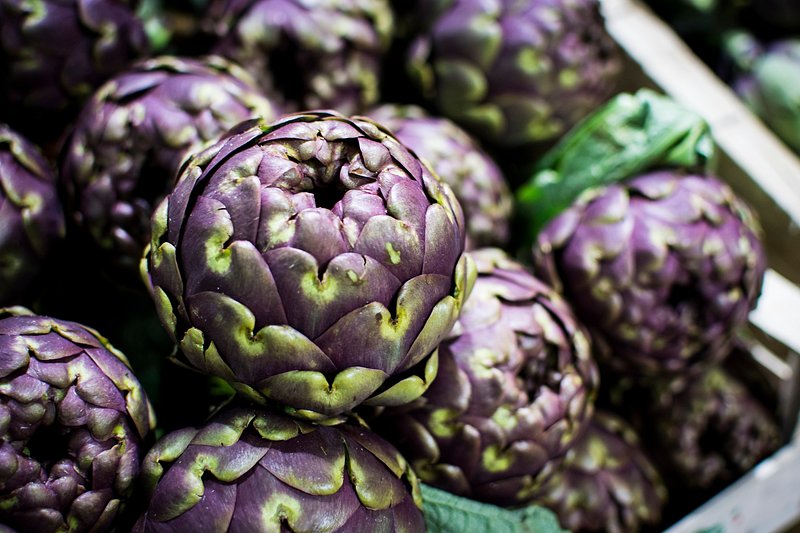Artichokes are more than just a delicious vegetable. They are also one of the most beautiful and fascinating plants you can grow in your garden. With their spiky leaves, purple flowers, and edible buds, artichokes are a feast for the eyes and the palate. But how do you grow, cook, and eat artichokes like a pro? Here are some tips and tricks to help you enjoy this amazing veggie.

How to Grow Artichokes
Artichokes are perennial plants that belong to the thistle family. They can grow up to six feet tall and four feet wide, so they need plenty of space and sun. Artichokes thrive in mild climates, but they can also tolerate some frost and heat. They prefer well-drained, fertile soil with a pH of 6.5 to 7.5. You can start artichokes from seeds, but it is easier to plant crowns or root divisions in early spring or fall.
To plant artichokes, dig a hole about a foot deep and wide, and place the crown or root division in the center. Cover it with soil, leaving the top of the crown slightly exposed. Space the plants about four feet apart in rows six feet apart. Water them well and mulch them with straw or compost to retain moisture and prevent weeds. Fertilize them every month with a balanced organic fertilizer.
Artichokes need regular watering, especially during hot and dry periods. They also need to be pruned to encourage bud formation and prevent diseases. Cut off any suckers or side shoots that grow from the base of the plant, leaving only the main stem and a few leaves. Also, remove any dead or damaged leaves and stems. In the first year, you may not get any buds, but don’t worry. The plant is establishing its roots and will produce more buds in the following years.
How to Cook Artichokes
Artichokes are ready to harvest when the buds are about three to four inches in diameter and still tightly closed. Cut them off with a sharp knife, leaving about an inch of stem attached. Rinse them well and trim off any thorns or tough outer leaves. You can also cut off the top third of the bud to expose the inner leaves and the heart.
There are many ways to cook artichokes, but the most common and simple method is boiling. Fill a large pot with water and add some salt, lemon juice, garlic, and bay leaves for flavor. Bring the water to a boil and then reduce the heat to a simmer. Add the artichokes and cook them for 25 to 45 minutes, depending on their size. You can tell they are done when you can easily pull off a leaf and the heart is tender.
Another popular method is steaming. Fill a pot with about an inch of water and bring it to a boil. Place the artichokes in a steamer basket and cover the pot with a lid. Steam them for 20 to 40 minutes, or until done. You can also roast, grill, or bake artichokes for a more smoky and caramelized flavor. Just brush them with some oil, salt, and herbs, and cook them in the oven or on the grill for about an hour, turning them occasionally.
How to Eat Artichokes
Artichokes are best enjoyed with some dipping sauce, such as melted butter, mayonnaise, aioli, or vinaigrette. To eat an artichoke, pull off a leaf and dip the fleshy base in the sauce. Then, scrape off the meaty part with your teeth and discard the rest of the leaf. Repeat until you reach the heart, which is the most delicious part of the artichoke. Cut off the fuzzy choke with a knife or a spoon and enjoy the heart with more sauce.
Artichokes are not only tasty, but also nutritious. They are rich in fiber, antioxidants, vitamin C, folate, and minerals. They can help lower cholesterol, improve digestion, and protect the liver. They are also low in calories and fat, making them a great addition to any diet.
Artichokes are one of the purest colors of nature and one of the most rewarding vegetables to grow, cook, and eat. With these tips and tricks, you can enjoy artichokes like a pro and impress your friends and family with your gardening and culinary skills.
Related posts:




